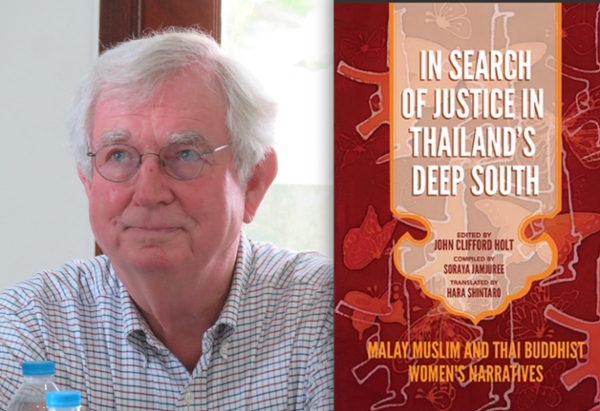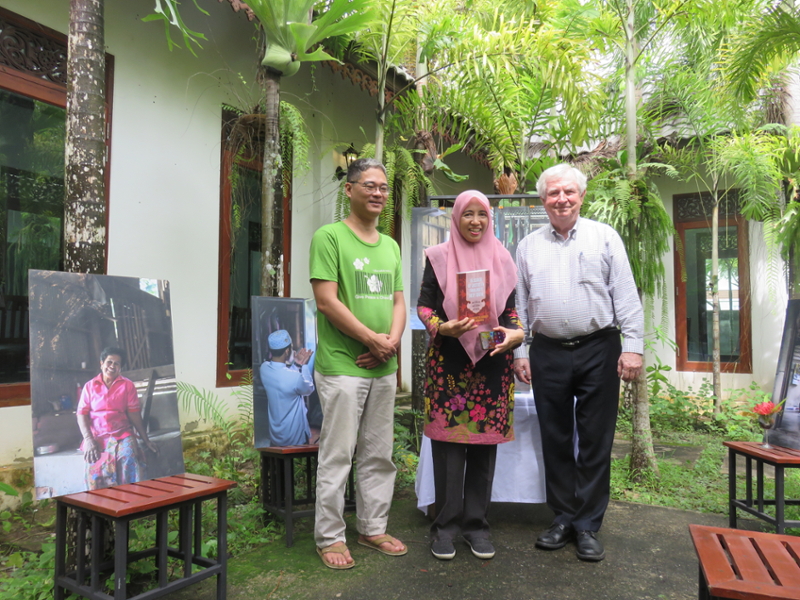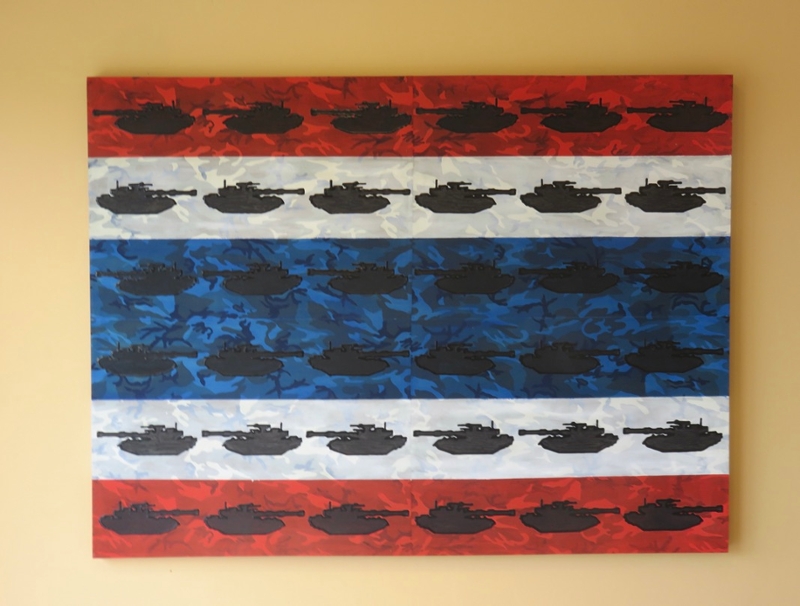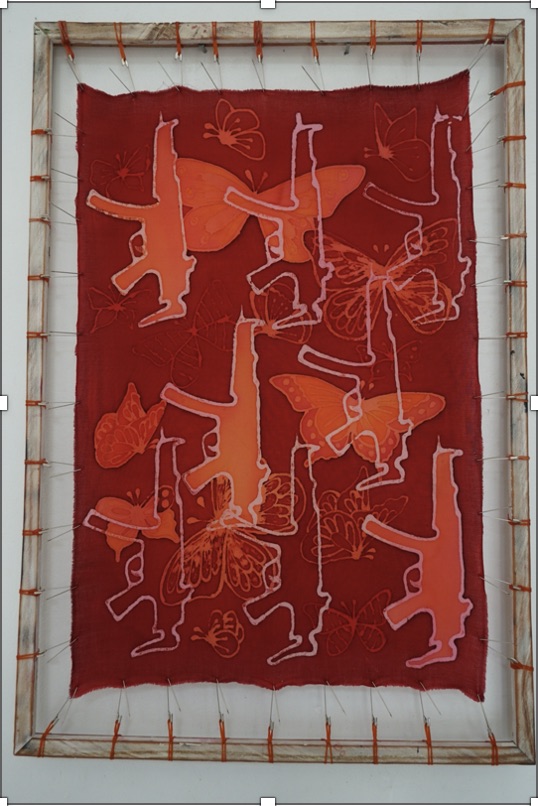“The Thailand You Don't Know”
By Tom PorterWilliam R. Kenan Jr. Professor of the Humanities in Religion and Asian Studies Emeritus John Clifford Holt has been immersed in the study of southeast Asia and Sri Lanka for more than fifty years, including four decades as a member of the faculty at Bowdoin, from which he retired in 2018. Since that time, he has been a visiting professor at the University of California–Berkeley and at the University of Chicago.
Holt has devoted much of his life to studying the problem of religious change in Theravada Buddhist countries. In 2014 he received a Guggenheim Fellowship to examine Buddhist-Muslim tensions in Myanmar, Sri Lanka, and Thailand. His third book on this topic, and his fifteenth book overall, focuses on Thailand, where a serious insurgency has been ongoing in the country’s southernmost region for nearly two decades, although the origins of the conflict go back hundreds of years.

“Thailand is a very centralized nation, where the national language is Bangkok-style Central Thai and where 90 percent of the population are Buddhists,” said Holt.
“Furthermore,” he added, “Thailand has a militarily inflected political regime, which, although not by any measure as repressive as the one now in Myanmar, for example, is still a government dominated by the military in which the King, highly revered by the armed forces, is seen as the embodiment of the state. Its general national policy is to cultivate 'Thainess,' meaning preserving the Thai language, supporting the Buddhist religion, and venerating the monarchy (nation, religion, king).”
Thailand’s southernmost provinces, however, do not fit into this attempt at homogenization, explained Holt. “In this part of the country, which borders Malaysia, most of the population are Muslim, speak Malay, and want the right to educate their children in their own language and to teach their own history.”
This is the general backdrop to the violence that has claimed nearly 8,000 lives over the last nineteen years. Holt’s latest book project—In Search Of Justice In Thailand’s Deep South (University of Virginia Press, 2022)—is primarily an edited collection of narratives compiled by Soraya Jamjuree and translated by Hara Shintaro, colleagues of Holt’s who are both based in Thailand's Deep South.
The heart of the book contains the stories of twenty women, mostly Muslim but also a few Buddhists, who have lost husbands, fathers, brothers, sons, and other loved ones in the conflict.
Roshida Dao: Her teacher husband was a victim of violence at the Kru Se Mosque in April 2004.
Masta Cheuma: Her son was among those who suffocated in the “Tak Bai incident” in October 2004 (see below). Later, her daughter-in-law was shot dead and another of her sons disappeared.
Khluean Sang-Amphai: In 2004 her son was shot dead by insurgents. Three years later her husband was beheaded.
“I’m happy to have the opportunity to edit this book and to write a historical introduction, because this the first English-language account giving voice to the often-neglected, marginalized women affected by a conflict not widely acknowledged internationally,” said Holt. “My first title suggested to the publisher was: 'The Thailand You Don't Know.'”

Conflict Origins
Although the historical roots of conflict date to the sixteenth century, a number of events in 2004 sparked the current troubles, said Holt. “In February of that year, Muslim insurgents raided a government arms depot and made off with a lot of weaponry, which was very embarrassing to the Thai military, as you can imagine.” The army responded by rounding up scores of people, most of whom were clearly innocent, said Holt.
The situation spiraled further out of control when a subsequent demonstration was organized in protest at these arrests. “The army reacted in a disgraceful fashion,” said Holt, “attacking the crowd and then rounding up hundreds of protestors. Detainees were stacked five-deep into the backs of trucks, and by the time they reached their destination, seventy-eight of them had suffocated. This, of course, created deep resentment among Thailand’s Muslims, and a number of stories in the book relate to the fall-out from that incident.”
“This the first English-language account giving voice to the often-neglected, marginalized women affected by a conflict not widely acknowledged internationally,” said Holt, whose first title suggested to the publisher was "The Thailand You Don't Know.”
Another major event occurred later that same year, in October 2004, when an attack by Muslim insurgents on a number of police stations in the South unleashed a bloodbath in which over a hundred young Muslim students were killed, along with a handful of Thai policemen. At the same time, government security forces also killed more than thirty Muslim insurgents who had sought refuge in a historically revered mosque.
“The events of 2004 gave rise to a martial law decree as the government introduced emergency measures enabling suspected people to be held for up to two months without charge—measures that are still in place today—and of course it is only Muslims who have been arrested.”
Holt stresses that ongoing violence is committed by both sides in the conflict (and this is something that comes across in the book), but he also stresses that the repressive actions of the armed forces of the Thai Buddhist state—including violence and torture—have served as a catalyst for increased Muslim insurgency.

Radicalization Threat?
Thai authorities have been somewhat influenced by the example of events in Sri Lanka, where there have been fears of a Muslim takeover expressed among the majority Sinhalese Buddhist extremists, some of whom have enjoyed the tacit support of recent nationalist governments. “Many Sri Lankan Muslims have gone to work in the Middle East and come back with Wahabi ideas, advocating an allegedly pure, more fundamentalist form of Islam, which is often linked to Jihad,” said Holt.
“Many new Qu'ranic schools have started to appear in Sri Lanka, along with new mosques funded by money from the Middle East. Women began dressing in conservative Middle Eastern fashion, all contributing to a sense of growing separateness in a country whose religious culture historically has been somewhat interwoven.

“Furthermore, a series of suicide bombings carried out by Islamic militants on Easter Sunday in 2019, killing nearly three hundred people, bolstered the propaganda of those extremists who claim that Muslims are planning to take over the country and led to a widespread backlash against Muslims, including the return to power of a Buddhist nationalist regime.
Nevertheless,” Holt continued, “the fact is that Sri Lanka’s Muslims remain, on the whole, preponderantly moderate people, as is also the case in Myanmar and Thailand.”
There’s a similar Islamophobia among some elements of conservative Thai Buddhists toward Malay Muslims in southern Thailand, said Holt, where the government remains concerned that fundamentalist Islam is establishing a foothold.
“There are Wahabi Muslims in the Deep South,” said Holt, “but so far they have shown little, if any, public support for an armed insurgency, and neither has the vast majority of Muslims living in the rest of Thailand.
There remains a modicum of hope in ongoing peace talks between the Thai government and representatives of the insurgents, talks being observed by the Malaysian government. But the talks began in 2013 and progress has been slow and sporadic. Periodic violence continues."
In the media: Holt and his colleagues Soraya Jamjuree and Hara Shintaro are featured in a Thai PBS television report.
Holt writes: “The lady in the pink hijab is Soraya Jamjuree, whose NGO has assisted these victimized women and collected their stories. She is explaining that 'now these women are no longer simply historical statistics, but their experiences can be known to thousands of English readers whose make use of university and good public libraries in Europe and America.' The Japanese man is the translator, Shintaro Hara.This was a real collaborative effort!”